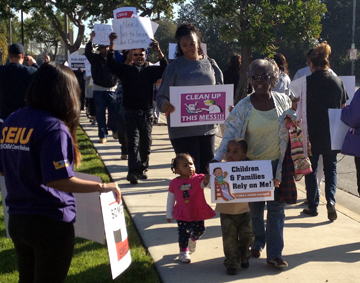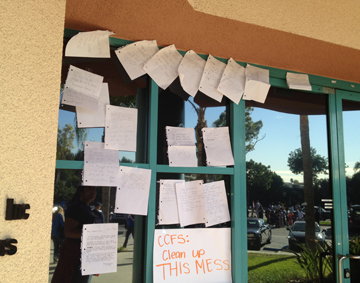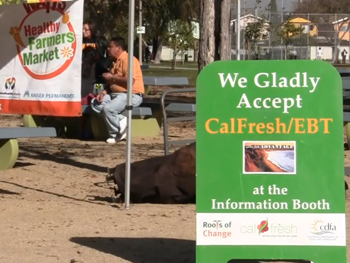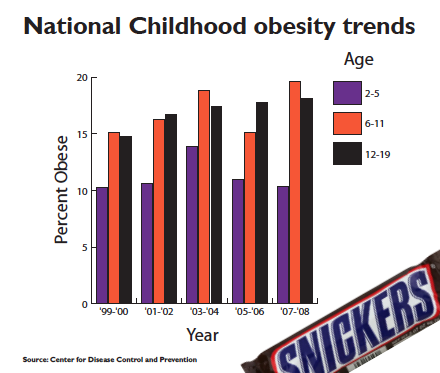 As of Thursday morning, Ruby Evans had only $18.65 in her bank account. She runs Evans Family Day Care in Compton, one of many centers contracted by the state of California to provide subsidized child care.
As of Thursday morning, Ruby Evans had only $18.65 in her bank account. She runs Evans Family Day Care in Compton, one of many centers contracted by the state of California to provide subsidized child care.
In December, she only received 20 percent of her paycheck and wasn’t paid for the months of July, August, September or November last year.
Evans joined about 50 other care providers and parents who haven’t received payment to protest the Center for Children and Family Services Thursday morning.
The agency is given money by the state to pay child care centers like Evans’ that serve low-income families in cities such as Compton, Lynwood and South Gate, where few people can afford private day care services.
“I had to pull out my retirement just to pay my utility bills,” says Evans, who is 63 years old. “I can’t pay my house, my gas, lights and water. I’m on the phone all day trying to get extensions and explain to them why I can’t pay.”
The agency has contracts with about 1,000 providers through South Los Angeles and the South Bay, and none were fully paid in November or December.
Evans received only $700 of the $3,700 she was due last month. A representative for the Service Employees International Union said all of the providers they have spoken to have either received 20 percent or zero percent of their paychecks and the agency hasn’t given them any explanation.
The group had signs demanding at least 80 percent of their pay and marched outside the agency’s headquarters in Carson for more than an hour, leaving notes of their grievances taped to the blacked-out locked doors of the head quarters.
 No one from the agency responded to the protest aside from a security officer who stepped out to take down the notes.
No one from the agency responded to the protest aside from a security officer who stepped out to take down the notes.
Vanise Valentine is the parent of a five-year-old and uses the subsidized child care while she works and attends school to become a teacher.
If her provider closes, the 29-year-old mother says she might have to cut back at work or school because she says she can’t afford private day care.
The agency would not comment on the issue, but fiscal problems aren’t new.
The Pasadena Star-News reported last fall that the agency’s Head Start program in Pasadena and Glendale was shut down after a state-run audit showed the agency had a $5.1 million deficit despite receiving a $12 million grant.
Since the audit, the agency has been put on a conditional contract with the state, says Jennifer Barraza of the Service Employee International Union, who has been trying to help the care providers get their paychecks.
She says one of the reasons the agency has been able to get away with cutting off their providers from any communication or payment is because there are no state regulations for child care.
In October, the California Legislature passed a bill that would allow child care workers to unionize but Governor Jerry Brown vetoed it — just like Governor Arnold Schwarzenegger vetoed similar bills in 2008, 2007, 2006 and 2004.
“We can not afford a broken child care system. The state cannot afford a broken child care system,” says Tonia McMillian, who runs Kiddie Depot in Bellflower and has rallied in Sacramento on behalf of child care workers.
“We want to have the chance to have some say-so in fixing the system,” McMillian says. “We need a voice or we are going to be forced to close our doors too.”









 Corine Recasner has visited the Watts Healthy Farmers Market nearly every week for more than four years. Some weeks she buys eggs and oranges, but other weeks she can be found selling homemade gumbo or berry jam.
Corine Recasner has visited the Watts Healthy Farmers Market nearly every week for more than four years. Some weeks she buys eggs and oranges, but other weeks she can be found selling homemade gumbo or berry jam. But even when produce is brought to these areas, affordability can still stand in between the people and a healthy lifestyle.
But even when produce is brought to these areas, affordability can still stand in between the people and a healthy lifestyle. Childhood obesity has steadily risen over the last 50 years in the United States. Los Angeles area doctors said that almost 50 percent of their patients are either overweight or obese.
Childhood obesity has steadily risen over the last 50 years in the United States. Los Angeles area doctors said that almost 50 percent of their patients are either overweight or obese.




